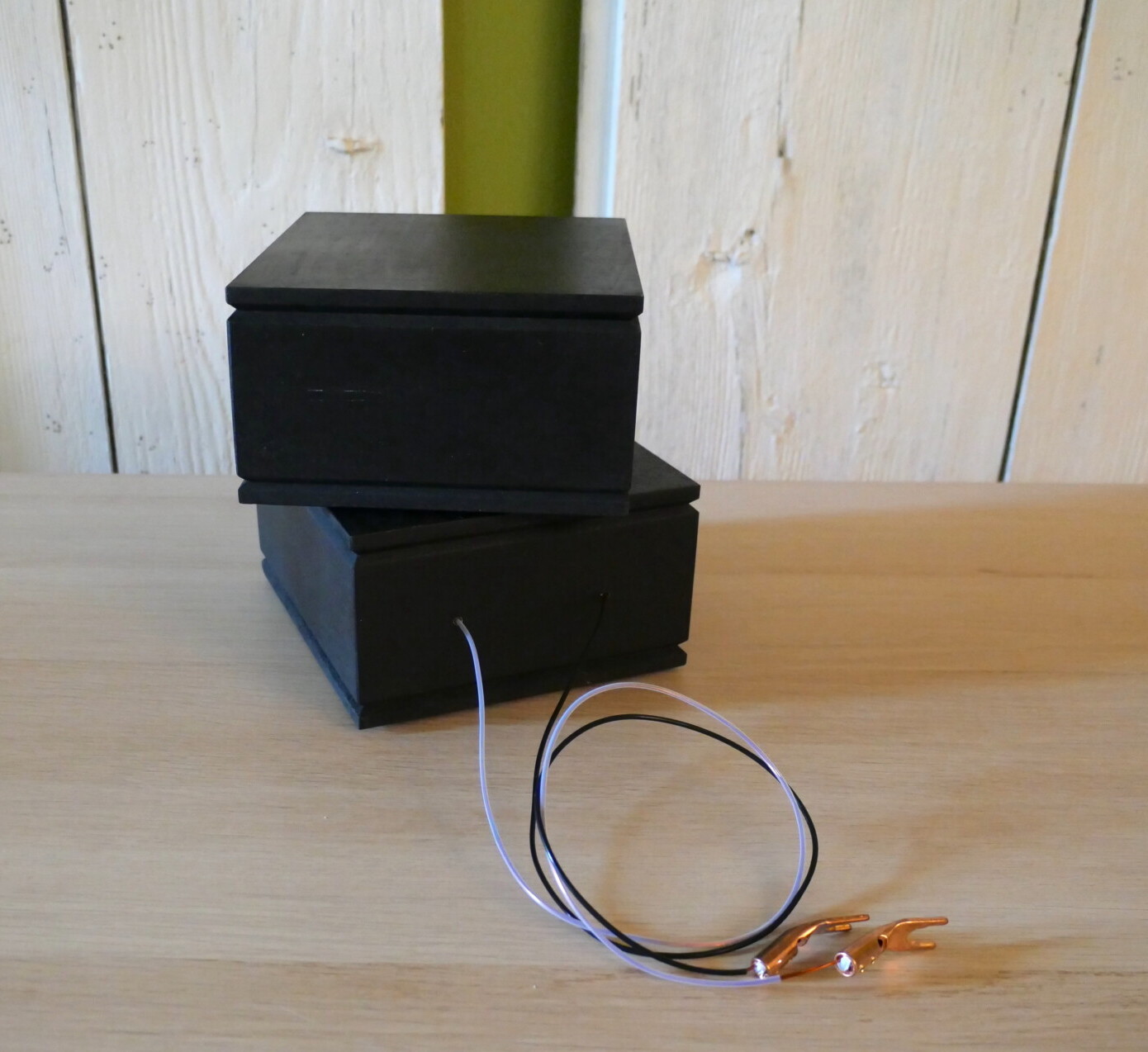
The sonic influence of the NoiseTraps is remarkably consistent, the musical benefits cross all genres. Playing the Rachel Podger/Holland Baroque Society recording of Vivaldi’s La Cetra (Channel classics CCS SA 33412), adding the BlackHoles to the speaker terminals opens out the soundstage, adding depth and air as well as body and dimensionality to the individual instruments. The notes of the chamber organ, fluffy almost by definition, gain shape, pitch and placement, as well as tonal and textural separation from the double bass. The Harpsichord grows a bottom-end as well as gaining its natural complexity. Rhythms and phrases become more definite, the playing taking on a life and vitality that adds focus and purpose to the whole. Step up in scale to the Kertesz New World (Decca SXL 2289) and the NoiseTraps bring transparency and definition to the soundstage, separation within it and instrumental colour and texture. The overall reduction in grain and murk is surprising, given the comparative clarity and purity of the Göbel speakers, compared to the competition. The sense of pace and dramatic tension is heightened but the really shocking change is in the timps. Suddenly you can hear the individual strikes within a roll, the skin and the hollow body of the instrument. What before was a thick, heavy smudge becomes a series of distinct and perfectly placed musical detonations. The effect on the performance as a whole, its pace, impact and expressive range is significant, not least because this is only the most obvious example of a broadband increase in instrumental bite and texture, leading-edge definition and rhythmic precision.
Nor are the benefits limited to acoustic recordings. Jim White’s heavily produced and processed Drill a Hole In The Substrate (Luaka Bop VVR 1026938) is a case in point. Play ‘Static On The Radio’ and once again, the NoiseTraps open out the (this time synthetic) sound-scape, isolating the individual noise and sonic tics, the fuzz and distortion that populate the space. White’s gravelly vocals are more recognisable and yes, that is Aimee Mann doing the backing. Up-shift to ‘Handcuffed To A Fence In Mississippi’ or ‘10 Miles To Go On A 9 Mile Road’ (both on No Such Place, Luaka Bop VVR 1027482) and the driving rhythms gain pace and purpose, the sardonic humour bite and an edgy touch of desperation – or desolation.
Like I said, not small differences – and this in a system in which the cables are Nordost’s Odin 2 and the amplifiers are CH Precision M1.1s – both products that offer unusually good rejection of (or are at least less susceptible to) mechanical interference, the cables for the reasons outlined above, the amps thanks to the sophisticated mechanical grounding system built into their chassis. Time to try a less revealing (and less exacting) set-up: a pair of the Peak Sinfonia loudspeakers, driven by the Levinson 585 and fed by the Wadia S7i transport, wired with Chord Co cable.
Playing the same tracks on this second system produced similar but specific improvements. Particularly on the Vivaldi discs, the NoiseTraps brought a clarity and separation to what was previously a muddled continuo. With the black boxes hooked up to the bass terminals, the identity and location of the chamber organ, the bass, cello and harpsichord were much better defined, as was the issue of which instrument was doing what. There was now no confusion between plucked cello and harpsichord, organ and bass, the instruments separated in space and tonality. But the new clarity also brought a degree of sluggishness to the tempo that demanded a subtle nudge forward of the speakers, a shift that brought new vitality and purpose, rhythmic integrity to the performance and attack to the bowing. The improvements in transparency, focus and dimensionality weren’t as apparent as those on the Göbel speakers, but the overall increase in intelligibility, coherence and musicality was on a par: different sonic effects, same musical result.
When small can also be big…
One of the critical factors when assessing the viability (as opposed the effect) of any device like the BlackHole NoiseTraps is the question of relative cost. The Göbels are the best part of €60,000, in which context, the expenditure of a further €2,500 is far from excessive, especially given the benefits. The Sinfonias are nearer to €40,000: still not too much of a stretch given the positive impact. But what about speakers at lower price levels or speakers with a more limited (or more tailored) bandwidth? Time to reach for the Vienna Acoustics Haydn, a small but astonishingly capable stand-mount that’s closer to €4K in price than €40K. Is it even remotely possible for an external upgrade to justify more than 50% of the speakers’ purchase price? Well, historically speaking, the answer to that is a firm yes, given the money invested in speaker stands for similar stand-mounts. But there at least you were (generally) getting spine-threatening mass for your money. A couple of small, MDF boxes? That’s a big ask… Despite the scale of the financial challenge, clearly, nobody bothered to tell the NoiseTraps.

